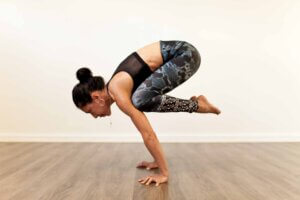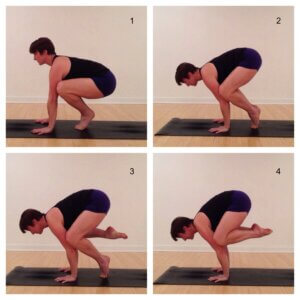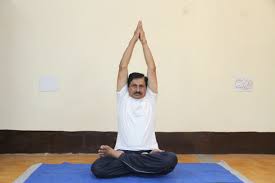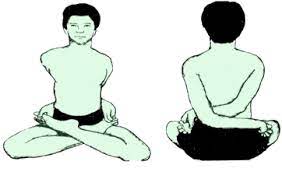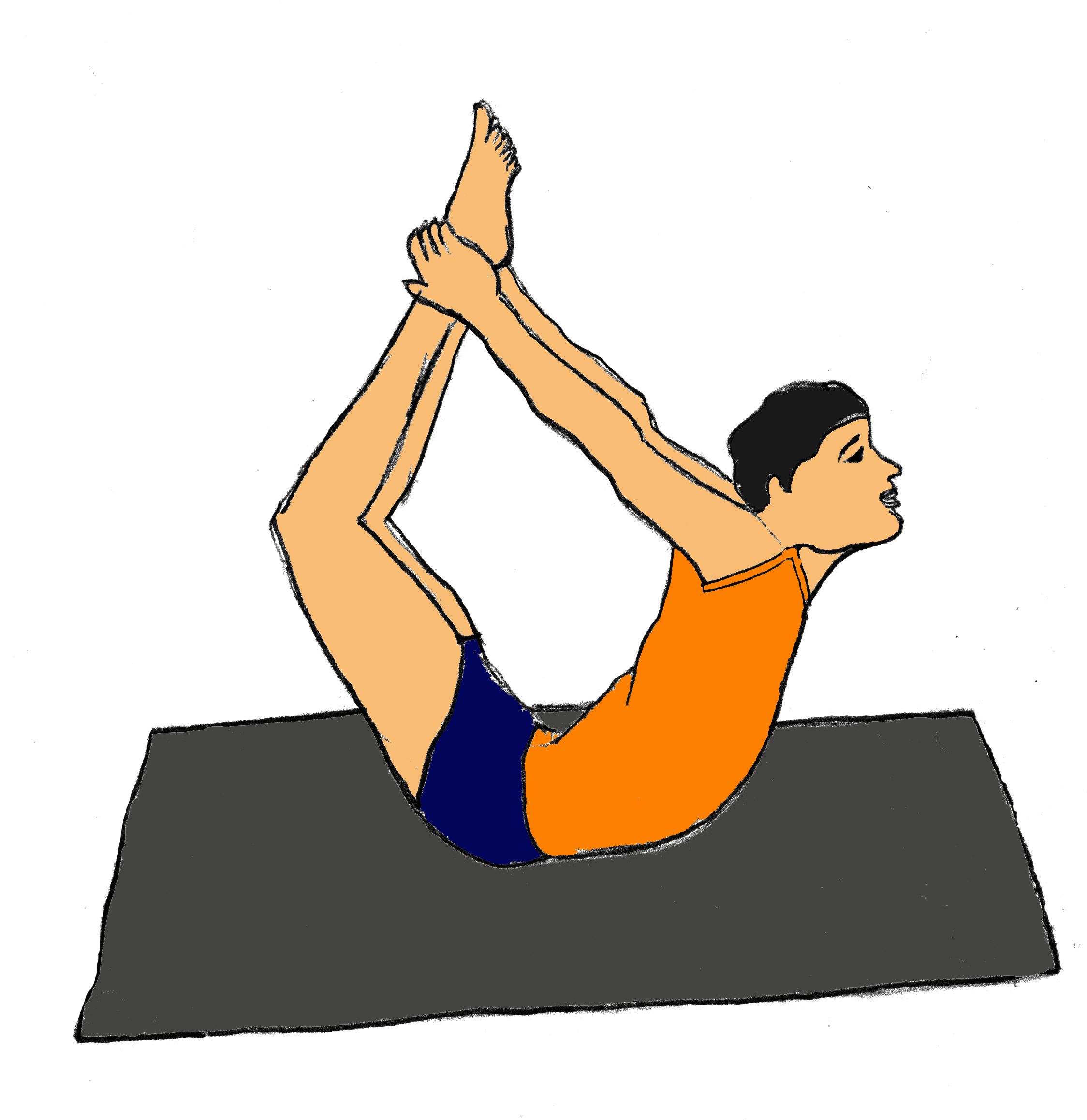Bakasana
Bakasana or Crow Pose is one of the first asanas that yoga students need to practice when they are learning arm balance. Even though it may seem that the asana is mainly about enhancing and focusing on arm strength, students actually learn to manage their center of gravity so that they can distribute their body weight and find physical balance. One of the main challenges that students of Bakasana need to deal with is the reluctance to sufficiently move their body’s weight onto their hands. Once students find that ideal spot for their body’s weight, they can easily move their feet off the floor.
Steps of Bakasana
Follow the steps of Bakasana discussed here carefully when you are trying to master this asana.
- Start by standing in the Tadasana or the Mountain Pose by keeping the arms along your sides. Make sure that you breathe normally and steadily during the pose.
- Now bend the knees slightly to bring your palms and keep them on a floor flatly while maintaining a shoulder distance.
- Keep the palms on the surface of the mat firmly about a foot just in front of the feet. Spread the fingers widely and press firmly on the top joints of the fingers.
- Bend the elbows straight back but do not get them folded fully, even though it should have a tendency of that.
- Lift your body gently by pressing on the balls of the feet. Open the knees and make sure that they are in line with the upper arms.
- Place the knees firmly on backs of the upper arms.
- Now start bringing your weight forward so that it focuses into the hands as you lift your head.
- As you do so, come to the tip of your toes so that you can lift one foot and another one off the floor.
- Use the inner thighs to support your body as you keep your knees on your arms.
- Now closely hug the feet firmly toward your butt.
- Concentrate on the physical feeling of lifting your body. Do not sink into the pose as this can put all the weight of your body into the shoulders.
- As you try to come out of the pose, exhale and transfer the weight of your body backwards until your feet gently touches the floor.
Preparatory Poses
Here are the preparatory poses that you need to practice before you start with Bakasana.
- Baddha Konasana
- Balasana
- Virasana
- Plank Pose
- Adho Mukha Svanasana
Video
Follow up poses
The follow up poses mentioned below should be done once you have performed Bakasana.
- Chaturanga Dandasana
- Plank Pose
- Adho Mukha Svanasana
Tips for performing Bakasana
Mastering the bakasana can seem to be a difficult task and many people may feel it is impossible to do it the right way. However, by practicing regularly you can cultivate the mental strength and physical agility to perform this asana properly. Even the most experienced yoga masters had difficulty when they tried to lift their feet of the surface of the ground during their early phases. It is not uncommon for people to fall down while trying to do this asana. It is however important that you do not get frustrated by these initial failures and keep on practicing. As you do so, you can cultivate the confidence needed to do this asana in the right manner. You can also develop a better connection between your mind and your body which is usually lacking at the initial stages.
A common mistake many beginners make while doing bakasana is that they lift their buttocks sufficiently high and away from the heels. The right thing to do here is to keep the buttocks and heels tightly together. Once you feel that you are prepared to lift your feet from the floor, make sure that you push your upper arms closely against your shins and bring the inner groins deep inside the pelvis so that you can lift your body easily. You should not let the elbows spread out to both sides and keep them in one straight line with the wrists and shoulders. If you do not do so, a lot of weight can be exerted on the wrists and this can cause injuries. This is something you can avoid by gripping the fingertips firmly into the ground. You should also see to it that the elbows are positioned over the wrists.
You must use the core muscles of your body to lift and maintain the legs instead of only relying on the hips. Keep your knees high enough so that you do not have your legs rested on the arms. Make sure that your gaze is towards the horizon and avoid dropping your head on the ground. Managing your gaze properly will help you to avoid losing balance and tipping forward.
Benefits of performing Bakasana
Here is a look at the main benefits of practicing bakasana.
- Bakasana can help in strengthening the upper arms, shoulders, the wrists and forearms. The pose can also tone and strengthen the core muscles of your body along with the abdominal organs.
- It is known to stretch and mobilize the upper back portions of your body and help in opening of the groins. Bakasana is one of the best asanas to work on the abdominal muscles.
- When performed regularly, bakasana can improve the elasticity, nimbleness, agility and flexibility of the spine. It can also assist with physical balance and enable you to attain full body coordination.
- Bakasana teaches the practitioner to be in the moment which can calm the mind. In this way, one can develop a better connection between the mind and the body. Apart from enhancing one’s physical body awareness, this can also get rid of fear, stress and anxiety and replace them with a sense of self confidence and inner assurance. By enabling a person to accept his or her fears, bakasana can imbibe a strong sense of courage in them.
Precautions and contraindications
Pregnant women and those having carpal tunnel syndrome should refrain from practicing bakasana.
Now that you have learned about the crucial aspects of this asana, make sure that you practice it on a regular basis so that you can get rid of the fear and apprehension associated with it. Within a short time you will be able to do this asana in the right manner.
References
https://www.yogajournal.com/poses/types/crane-pose/
https://tintyoga.com/magazine/crow-bakasana-a-yoga-pose-to-overcome-fears/
https://yogaselection.com/bakasana-how-to-do-bakasana-from-an-iyengar-perspective/
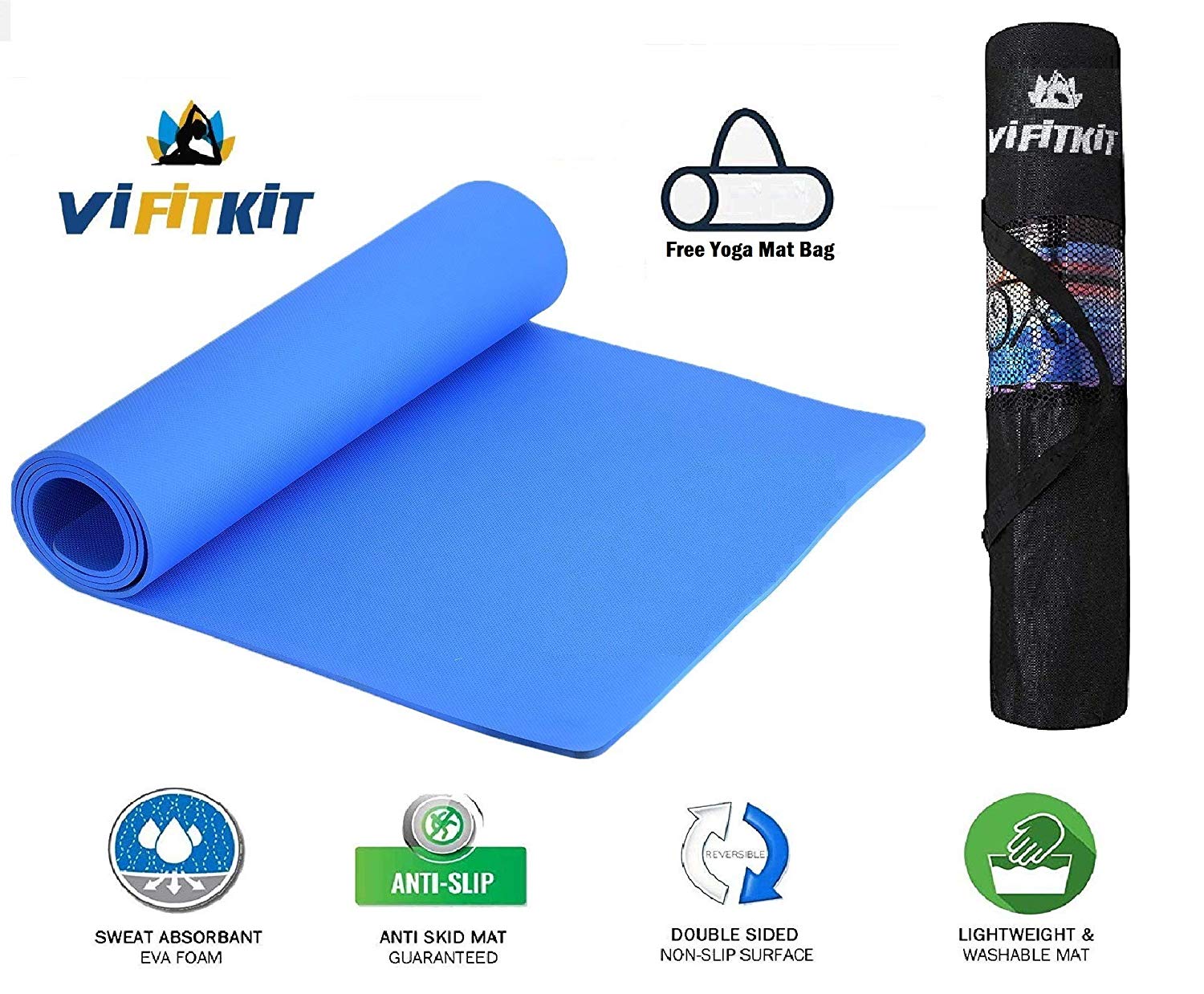
VI FITKIT Yoga Mat Anti Skid EVA Yoga mat with Bag for Gym Workout and Flooring Exercise Long Size Yoga Mat for Men and Women (Color - Blue)
Price: Rs 399.00 FREE Delivery. Details
About The Product
- With high density foam material, The thick ( 3 mm thick ) premium mat with comfort cushion spine, hips, knees and elbows on hard floors. This makes it a perfect size for both men & women.
- SWEAT RESISTANT AND WASHABLE YOGA MAT - Next time don’t stress when you sweat while doing yoga. The yoga mat is completely sweat resistant and has a Moisture resistant Technology which makes the mat easily washable with soap and water.
- This Yoga Mat is designed to give you the most comfortable yoga experience possible. The extra thick mat protects joints without compromising support or stability
- DURABLE & ECO FRIENDLY YOGA MAT - The EVA material is extremely durable and eco friendly. It lasts upto 5 times more than a regular plasticky mat! The material is biodegradable and free from PVC, silicon, latex and other toxic materials. We believe in creating quality and Eco friendly products for our customers!
- Care Tips: Do not place in washing machine or dryer, Please clean before and after using, clean regularly and keep it dry for healthy using.
